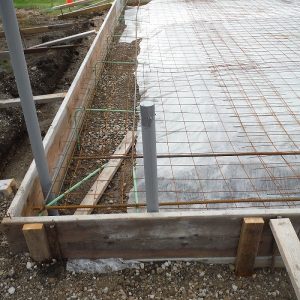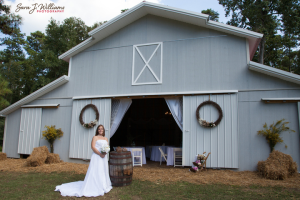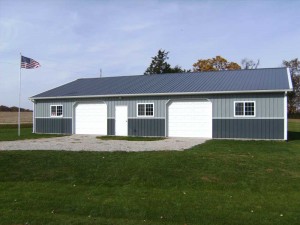Why I Truly Love Competitor’s Websites
When my bride and I were first married, we did the bulk of our grocery shopping at the closest supermarket – an Albertson’s. Not long afterwards, a Safeway was built across the street. My wife commented upon how this must have upset Albertson’s.
To the contrary, I replied, healthy competition just brings in more customers for both businesses.
I always wanted to be positioned right there with my competitors, as it caused me to bring my game to a higher level – I can do what you do, and do it even better!
The internet provides not only a plethora of information to clients who want to know, but it also allows for the pole builders and pole building kit package suppliers to keep tabs on their competitors and (for the smart ones) to stay at least a step ahead of them – if not more.
This morning I ran across an ad in Craigslist by a pole barn builder from Georgia. Being the curious type (I know my long time readers are giggling), I had to go check it out.
One thing I appreciate is wordsmithing, and (as I may have mentioned before) nearly anything can be spun into a positive feature (or the appearance of one).
Now this particular website addresses building features, but never talks about benefits to the client, in any terms which would be meaningful and recognizable.
Here is an excerpt:
“Standard Frame Structural System is designed for the industrial and agricultural market. This versatile system enjoys wide usage in manufacturing complexes, warehouse, and recreational facilities and agricultural buildings, while providing outstanding value combined with great appearance and durability.
Butt braced framing members are a key factor in the superiority of the design. Equal distribution of the forces and stresses is obtained by bracing roof and wall framing members between the protruding center laminate of the column as in our standard frame buildings, or between the columns as with our Flush Frame Buildings and recessed between the trusses in all of our building systems. The entire butt end cross section of the member transmits stresses to wall columns and trusses, around the building, Nails are used to hold bracing in place … not for absorbing stress, as in other buildings. The strength built into your building is obtained by utilizing the fiber strength of each member for positive bearing…rather than depending upon nails for strength.
All Pole Barns are designed with 3-2×6 laminated pressure treated posts. Each post is secured with 80 lbs. of concrete. All pole barns will have pressure treated 2×10 beam material. Beams are notched into the center 2×6 post. All of our pole barns use engineered roof trusses made of southern yellow pine, which meets building code requirements anywhere in the U.S., and are stripped with 2×4 roof purlins every 2’. We use 29 ga painted or galvanized metal and the matching screws, with a minimum of a 30 year guarantee for the metal.”
All sounds pretty dayem impressive, doesn’t it?
I will now (for your reading pleasure) translate into common language.
“Each post is secured with 80 lbs. of concrete.”
Wonderful, an 80 pound bag of Sakrete® is getting thrown into each hole, apparently with the idea it will make an adequate footing to resist gravity and uplift forces. (More on Sakrete® here: https://www.hansenpolebuildings.com/2012/11/concrete/). And why this builder’s ‘design’ has structural flaws: https://www.hansenpolebuildings.com/2014/03/concrete-cookies/
Now the excerpt above doesn’t include this useful tidbit of information – however it is listed as a feature under “specials”, “2×6 Pressure Treated Band Board” (have to give credit for originality in their renaming the splash or skirt board).
Sounds dandy until one ponders it further. A 2×6 measures 5-1/2”. When used, the base trim (aka rat or mouse guard) should have its “drip edge” held up four inches above grade – allowing any concrete aprons to be poured against the treated wood, without touching the steel. By the time the bends of the base trim and the wall steel is held up off the trim, it puts the bottom of the wall steel at 4-5/8” above grade. This leaves only 7/8” of overlap between the wall steel and the treated 2×6 – not much margin for error, and a potential for the screws to tear the bottom of the steel under high wind loads.
Moving forward – “All Pole Barns are designed with 3-2×6 laminated pressure treated posts.” In this case, three pressure treated 2×6 have been butt end spliced (without reinforcement) to untreated uppers. Why this may not be a great design solution here: https://www.hansenpolebuildings.com/2013/08/nail-laminated-posts/
Adding insult to injury, this builder staggers the middle of the three 2×6 so when installed, the center member protrudes out 1-1/2 inch from the outer two. This leaves only four inches of wood to wood contact for connections.
Elsewhere on their website is the use of 2×4 #2 grade wall girts installed “barn style” on the face of the columns. With columns every 10 feet, there is no Code in American where this would prove to be an adequate structural design. Read why here: https://www.hansenpolebuildings.com/2012/03/girts/
I did get a kick out of, “Equal distribution of the forces and stresses is obtained by bracing roof and wall framing members between the protruding center laminate of the column”. This clearly exposes this builder as not having a true understanding of how post frame buildings work. It is the building ‘skin’ which is doing the work of bracing, not the wall girts or roof purlins: https://www.hansenpolebuildings.com/2011/12/lateral-wind-loads/
Further, those overstressed wall girts are now connected with nails through the end into the 1-1/2” edge of the outermost ply of the columns. At best (and to meet NDS requirements), only two nails can be used to secure the girts. This connection is loaded in withdrawal – the girts want to be literally sucked off the building by the wind forces. Those two nails are going to fail miserably under critical wind loads.
“The strength built into your building is obtained by utilizing the fiber strength of each member for positive bearing”. The ‘fiber strength’ of each member has absolutely nothing to do with bearing areas – the correct turn would be ‘fiberstress in bending’ and deals with the ability of a given member to span a distance under load.
“All of our pole barns use engineered roof trusses made of southern yellow pine, which meets building code requirements anywhere in the U.S.” Pretty broad statement – the species of lumber which is used to manufacture metal connector plated wood trusses is not the determinate of meeting any Code requirements. In order to meet Code loading requirements for any given jurisdiction, a complex computer program is utilized which designs each wood member for size and grade to adequately support the loads applied.
Personally, I am interested in doing business where I am given the straight story, not someone trying to baffle me with b.s.










This is hilarious! Good find! You can tell that whoever wrote this must have had a thesaurus handy.